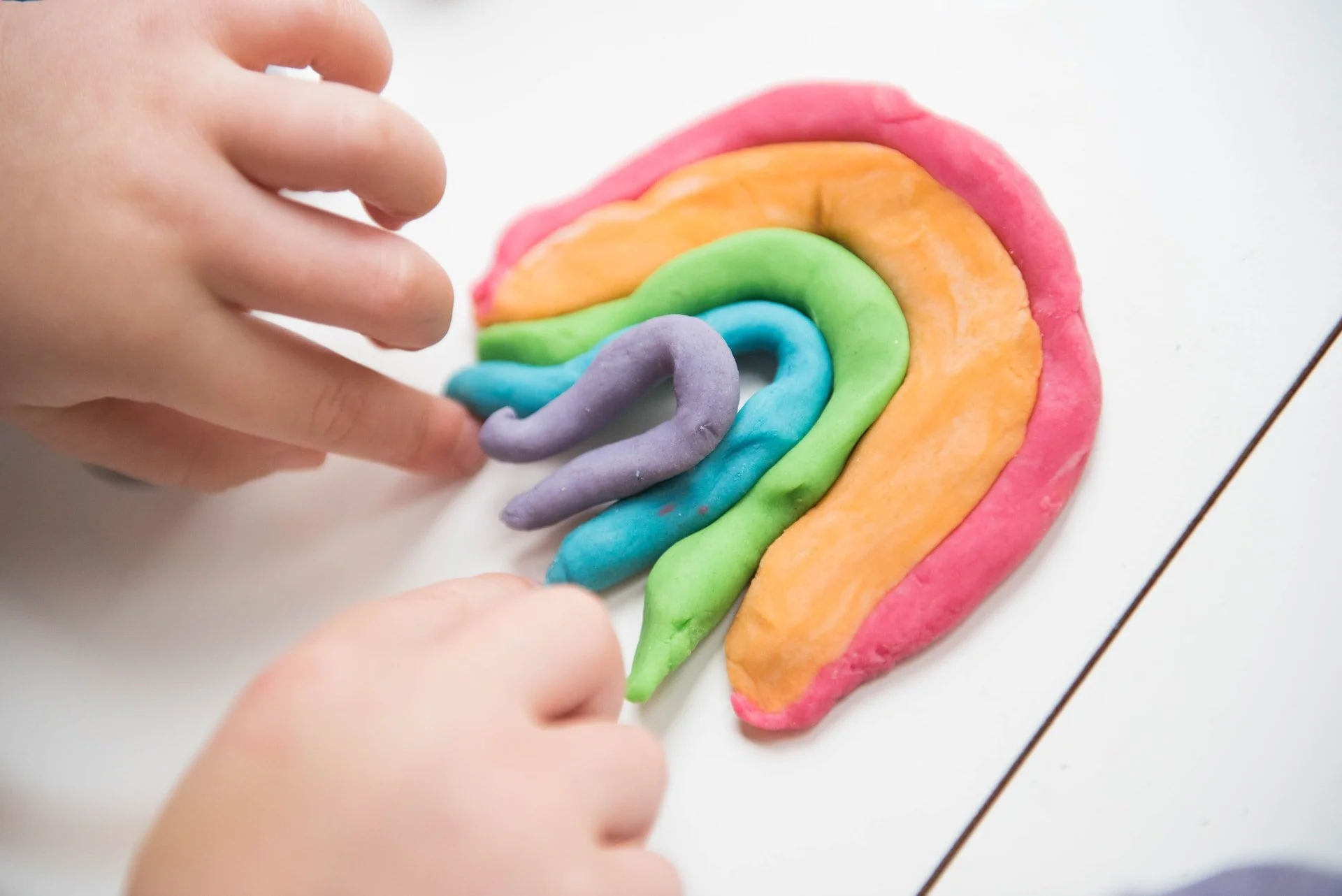The Hidden Risks of Playdough
Unveiling Toxins and Why You Should Make Your Own (Recipe included!)
Playdough has been a beloved childhood staple for generations, offering endless creative possibilities for kids worldwide. However, beneath its colorful and malleable exterior lies a less appealing truth—most commercial playdough products may contain toxins that could harm children's health.
Let’s explore the potential dangers of toxins in playdough and discuss why opting for safer alternatives is crucial for the well-being of our littles.
Phthalates and Their Role in Softening Playdough
Phthalates are plasticizers commonly used to add flexibility and durability to plastics. Most conventional playdough formulations include phthalates to achieve the desired texture. Unfortunately, these compounds have been linked to developmental and reproductive issues, making them a cause for concern when our toddlers are playing.
Heavy Metals
Playdough often contains colorants to make it visually appealing, but these pigments may contain heavy metals like lead and cadmium. Prolonged exposure to these metals can severely affect children's cognitive development and overall health.
Allergenic Ingredients
Certain playdough brands may use allergenic ingredients, such as gluten or wheat, posing risks for children with sensitivities or allergies. It's essential for parents to check ingredient lists (just like we do at the grocery store!) to ensure the safety of their child during playtime.
Safer Alternatives
The fun doesn’t have to be out, though. Thankfully, there are a few other options, including making your own!
Make playdough at home using simple, non-toxic ingredients like flour, salt, water, and food coloring. Numerous easy-to-follow recipes are available online, ensuring a safer and more controlled play experience for your child.
Our Favorite Recipe
2 cups flour
2 cups water
2 tablespoons oil (coconut)
4 teaspoons cream of tartar
1 cup of salt
Add flour, salt, and cream of tartar in saucepan and stir. Add oil and water and cook over medium heat stirring constantly until it thickens up and forms a ball. Cool on parchment paper.
Optional: Add some COLOR! You can buy plant based dyes at Whole Foods or online, or use the following:
Yellow- turmeric powder
Orange- paprika powder
Blue- red cabbage juice with baking soda
Red/pink - beet powder
There are also a few non-toxic brands out there for purchase now. I recommend Etsy!
So, while playdough remains a cherished part of childhood, it's crucial for parents to be vigilant about the potential dangers associated with conventional formulations. By understanding the risks of toxins like phthalates and heavy metals and actively seeking safer alternatives, we can prioritize the health and well-being of our children.

